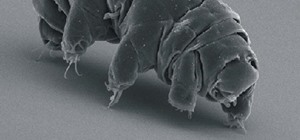Where in the world did it come from? All of a sudden, one day, someone had an infection with flesh-eating bacteria. It captured headlines and worldwide attention because it was such a severe, strange, uncontrollable, and really disgusting condition.
We still might not know where it came from, but thanks to new research by Dr. James M. Musser and his team at Houston Methodist Research Institute, published in the American Journal of Pathology, we now know exactly how this microbe digs into flesh to ensure the infection gets a good stronghold. Two toxins the bacteria produces, called NADase and streptolysin O, are to blame for the most severe tissue damage the bug can produce.
Flesh-eating bacteria's real name is Streptococcus pyogenes, which is, believe it or not, also a strep throat culprit. However, there are a couple other bacteria such as Escherichia coli and Staphylococcus aureus can also cause flesh-eating disease.
What turns a sore throat bacteria into a ruthless, gory killer? In some rare occasions, the strep is able to make it past the body's normal defenses and enter the blood or other tissues, becoming an "invasive strep" infection. The most common way for the bacteria to gain entry into to the blood is through a break in the skin via a cut or wound.
S. pyogenes lives on our skin and in the environment, yet most wounds don't get infected with the bacteria. Most people who get an infection with flesh-eating bacteria have other health problems that lower their body's ability to fight infection, such as diabetes, kidney disease, or cancer. Healthy people with a strong immune system have an extremely small chance of becoming infected.

Infection with flesh-eating bacteria—necrotizing fasciitis, caused by group A strep, is rare— about 500-1,500 cases occur each year in the US, and of these, about 20%, or 300-500 people, will die.
Rare, but life-threatening.
The Two Worst Toxins in Cahoots
The devastating effects of S. pyogenes are due to cytotoxins—chemicals that cause cell death—produced by the bacteria.
The study investigators used genetically engineered S. pyogenes that produced either NADase or streptolysin O, both, or neither, and infected mice with the microbes. The bacteria that lacked one or both of the toxins did not cause the most severe cases of flesh-eating disease. Both toxins were needed to create the most powerful infections—measured by how sick the mice were, how many bacteria were in their blood, and how much tissue damage they had.
"Our research revealed that the most severe form of the disease requires two cytotoxins. If either one or both are missing, the infection is much less dangerous," Musser, chairman of the Department of Pathology and Genomic Medicine at Houston Methodist Research Institute, said in a press release from Elsevier Health Science, publisher of the journal.
White blood cells called polymorphonuclear leukocytes are important soldiers in the fight against bacteria that enter the body. Musser and his team found that the S. pyogenes bacteria they created without NADase and streptolysin O were more sensitive to the bactericidal effects of human white blood cells than the more potent bacteria that produced both toxins. It's not clear why, but this may be one way the bacteria gets a stronghold in the human body.
Necrotizing Fasciitis—Literally, Flesh Eating
To fully understand the importance of finding the toxin's roles, we need to understand the disease.
This is not strep throat run rampant. It is a separate, different route of infection—usually through a break in the skin, like a cut, puncture wound, scrape, burn, or insect bite. One simple way to discourage this infection is to thoroughly clean all wounds.
There may be a red or purple area around the wound and some swelling, fever, chills, vomiting, and fatigue. And people complain of pain—pain that is out of proportion to the wound. It is very, very, very important to seek medical attention if you get any of these symptoms after even a minor skin wound.
The best bet to get on top of this infection is treatment with powerful intravenous antibiotics. Killing the bacteria as soon as the infection starts is an important strategy to prevent tissue damage by the bacteria. The damage occurs after the bacteria produces and secretes powerful toxins that help the bacteria infiltrate the tissue further, destroying it and decreasing blood flow to the tissue. Then the tissue dies.
The tissue can't recover, so removing the dead tissue can help remove the bacteria present there and often is needed, in addition to the antibiotics. Sometimes, whole body limbs have to be removed in an effort to stop the infection from moving to other parts of the body.
We might not know where flesh-eating S. pyogenes came from, but creating targeted therapies against these super-virulent cell toxins may let us someday wonder where the bacteria went.
Just updated your iPhone? You'll find new emoji, enhanced security, podcast transcripts, Apple Cash virtual numbers, and other useful features. There are even new additions hidden within Safari. Find out what's new and changed on your iPhone with the iOS 17.4 update.



























Be the First to Comment
Share Your Thoughts